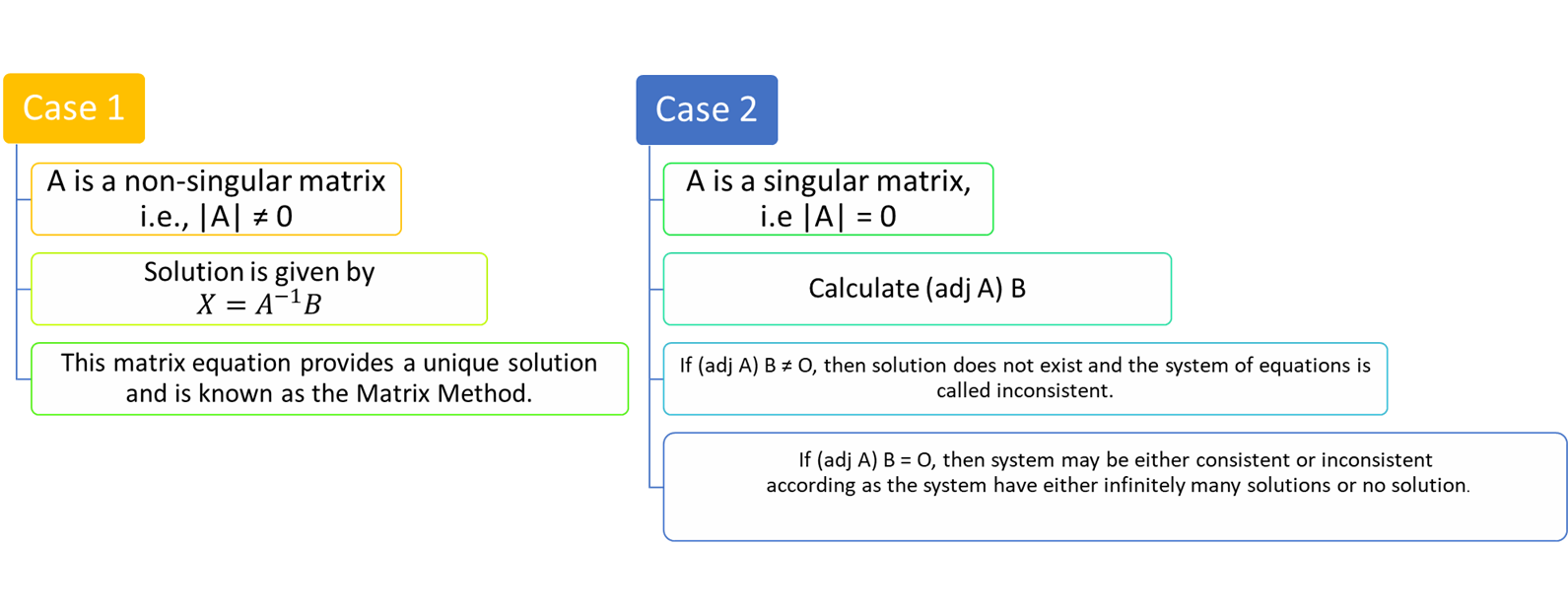Determinant
Definition:
·
The determinant of a matrix is
a special number that can be calculated from a square matrix.
·
It is denoted by det (A) or |A| .
·
Every square matrix A of the
order n, can associate a number called determinants of the square matrix A.
Determinant of the order one (1×1):
·
Consider a matrix A of order 1, then the determinant of the
matrix is equal to


Determinant of the order Two (2×2):
·
If the order of the
matrix is 2, then the determinants is defined matrix A, where A is,


· Example on finding a 2x2 matrix determinant

Determinant of the Order Three (3×3):
·
Suppose a matrix A of
order three is given as,

·
Then the determinant for
a 3×3 matrix is given by,


Properties
of Determinant:
· Property 1
·
The value of the determinant
remains unchanged if both rows and columns are interchanged.

·
Verification,

· Property 2
·
If any two rows (or
columns) of a determinant are interchanged, then the sign of determinant
changes.

·
Verification

· Property 3:
·
If any two rows (or columns)
of a determinant are identical (all corresponding elements are same), then the
value of the determinant is zero.
·
Verification,

· Property 4:
·
If each element of a row
(or a column) of a determinant is multiplied by a constant k, then its value
gets multiplied by k.

·
Verification,

·
By this property, we can
take out any common factor from any one row or any one column of a given
determinant.
·
If corresponding
elements of any two rows (or columns) of a determinant are proportional (in the
same ratio), then its value is zero.
· Property 5:
·
If some or all elements
of a row or column of a determinant are expressed as the sum of two (or more)
terms, then the determinant can be expressed as the sum of two (or more)
determinants.

· Property 6:
·
If the equimultiples of corresponding elements of other rows (or
columns) are added to every element of any row or column of a determinant, then
the value of determinant remains the same, i.e., the value of determinant
remains same if we apply the operation

·
If more than one
operation like Ri → Ri+
kRj is done in one step, care should be taken to see
that a row that is affected in one operation should not be used inanother operation. A similar remark applies to column operations.

Area of
Triangle Using Determinant:
·
If a triangle whose
vertices are given by

·
Then the area of
triangle will be given by,

·
Examples

Minors and
Cofactors:
·
The Minor of the element at the ![]() row is the determinant obtained by deleting
the
row is the determinant obtained by deleting
the ![]() row and the
row and the ![]() column
column
·
The Cofactor of this element is  .
.
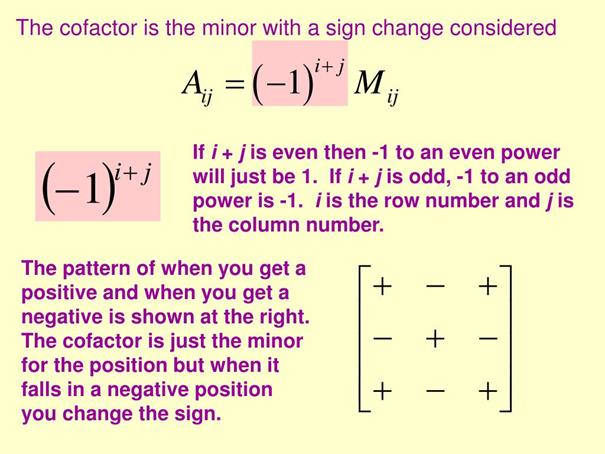
·
Finding Minor and
cofactor for 2x2 determinant,
·
Let the determinant be
given as,
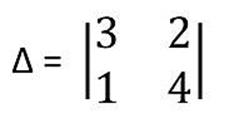
·
Minors will be given as
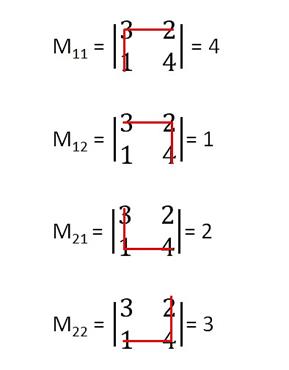
·
Cofactor will be given as
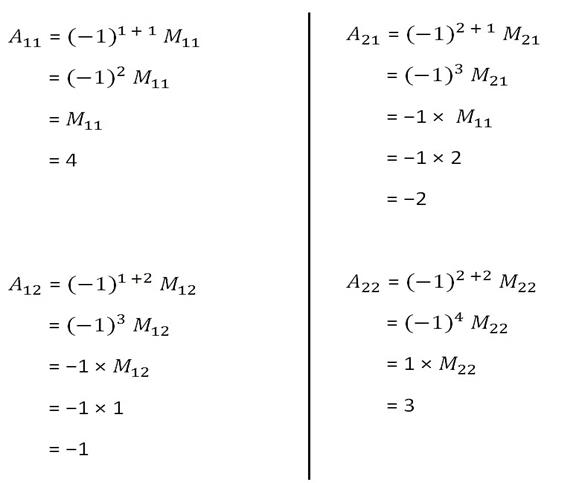
·
Finding Minor and
cofactor for 3x3 determinant
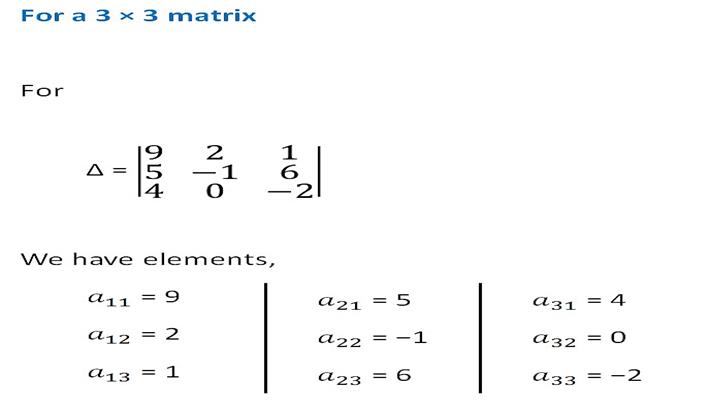
·
Minors will be,
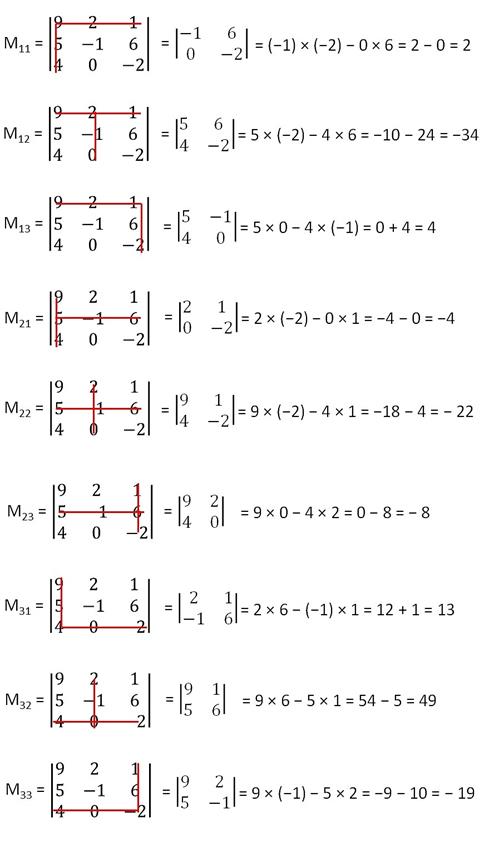
·
Cofactors will be,
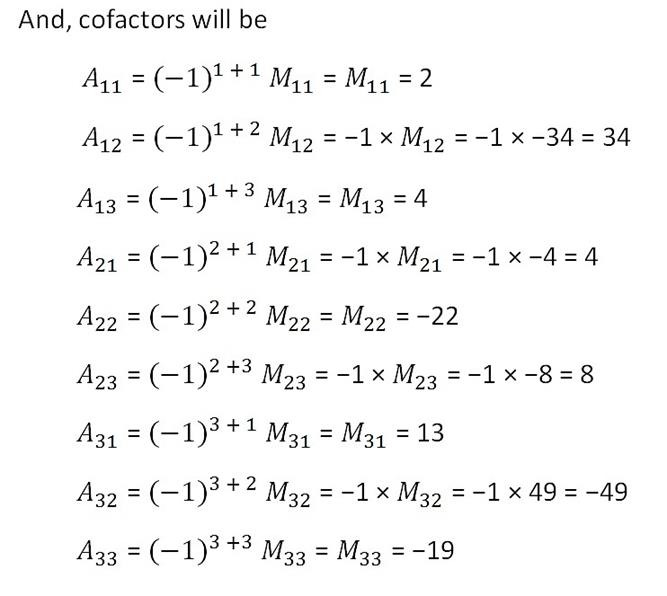
·
Use of cofactor,
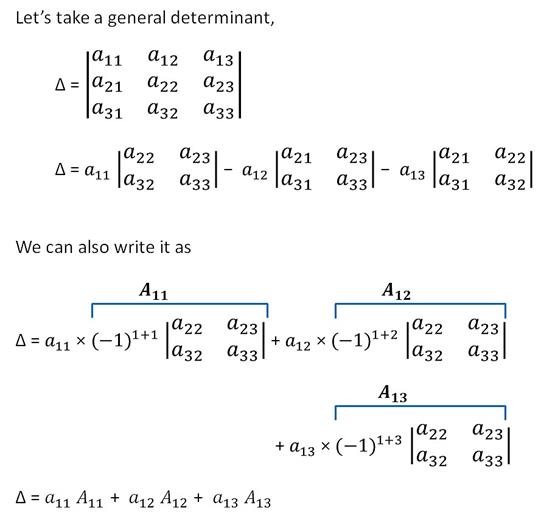
Adjoint of a Matrix:
·
The adjoint
matrix of A is defined as the transpose of the matrix of cofactors of A. It is
denoted by

·
Adjoint of matrix 2x2
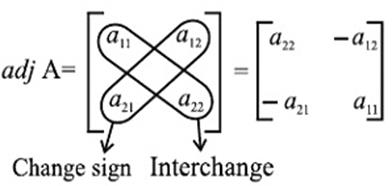
·
Example,
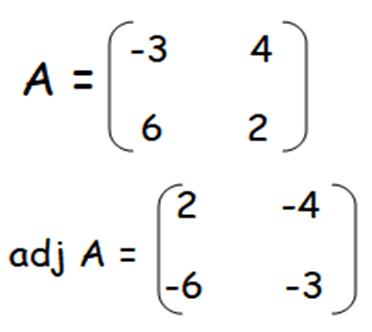
·
Adjoint of matrix 3x3
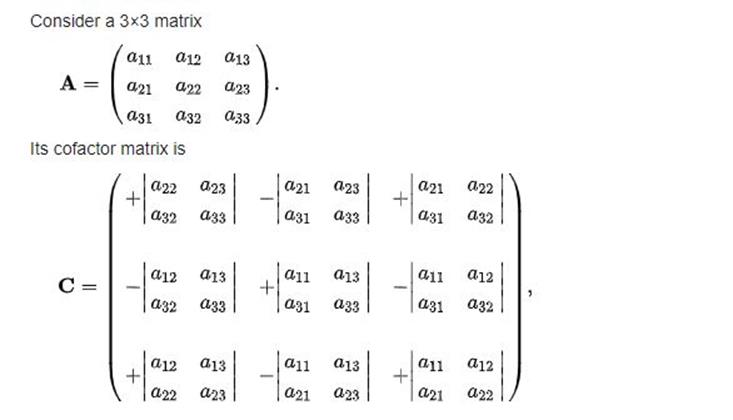
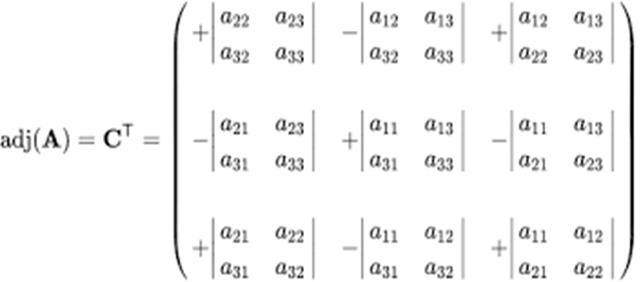
·
OR adjoint
can also be represented in terms of cofactors and minors,
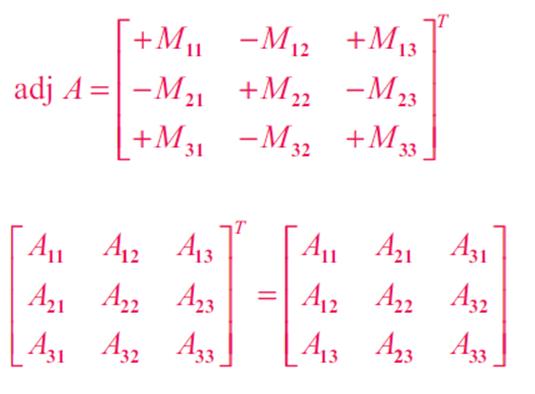
·
Examples,
·
Consider a Matrix A of
order 3x3
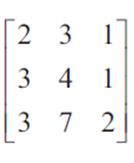
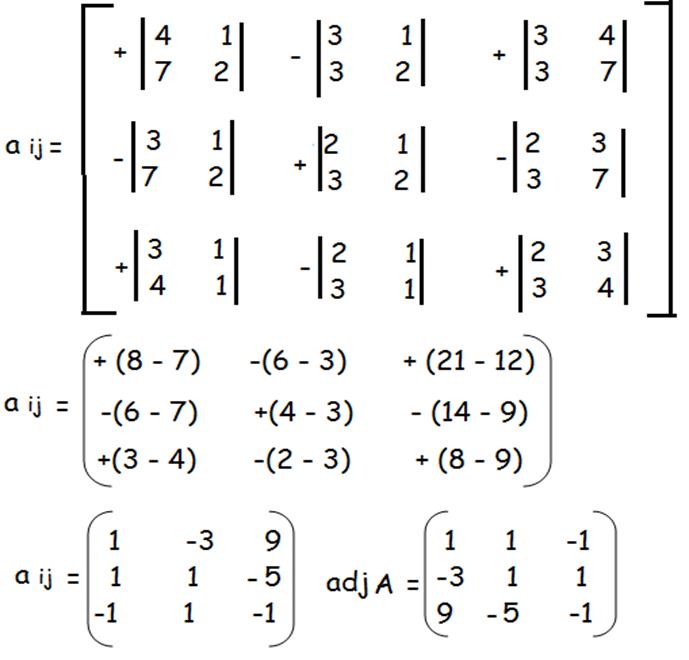
Singular
and non-singular Matrix:
·
If the value of
determinant corresponding to a square matrix is zero, then the matrix is said
to be a singular matrix, i.e. if |A| = 0, then it is said to be a singular
matrix.
·
Otherwise it is non-singular
matrix, i.e. for a square matrix A, if |A| ≠ 0, then it is said to be
a non-singular matrix.
Inverse of
a Matrix:
·
The inverse of a matrix
can be obtained by the formula given below.
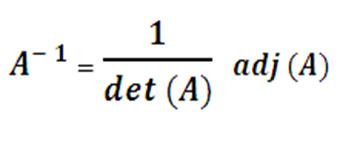
·
Provided that the given
matrix is a non-singular matrix, i.e. |A| ≠ 0
·
Example,

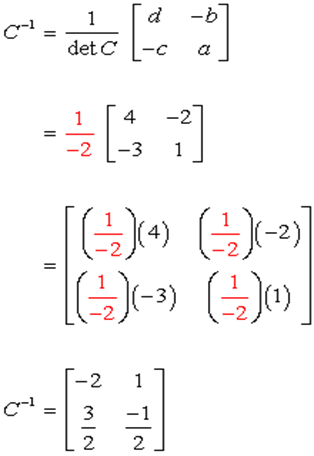
Theorems
on Adjoint and Inverse of a Matrix:
Theorem 1
·
If A be any given square
matrix of order n, then A adj(A) = adj(A) A = |A|I, where I is
the identitiy matrix of order n.
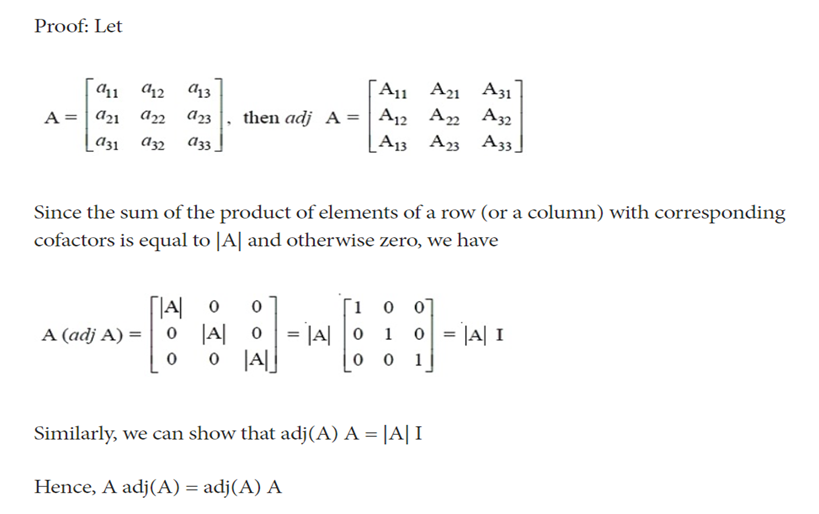
Theorem 2
·
If A
and B are non-singular matrices of the same order, then AB and BA are
also non-singular matrices of the same order.
Theorem 3
·
The determinant of the
product matrices is equal to the product of their respective determinants, that
is, |AB| = |A||B|, where A and B are square matrices
of the same order.
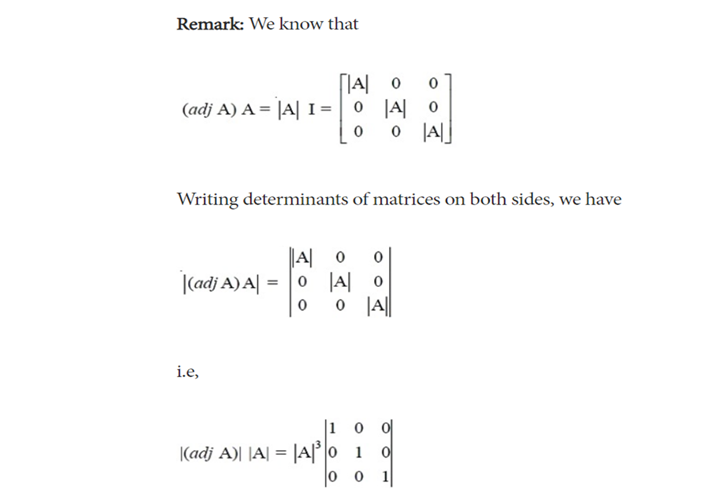

Theorem 4
·
A square matrix A is
invertible if and only if A is a non-singular matrix.
Solution
of System of Linear Equations using Inverse of a Matrix:
·
A solution for a system
of linear Equations can be found by using the inverse of a matrix. Suppose we
have the following system of equations

·
The above system of equations can be represented in the form of a square
matrix as

·
Here arise two cases
